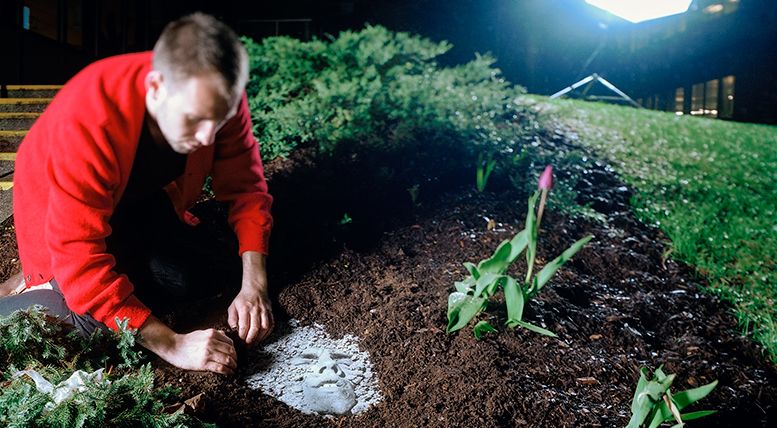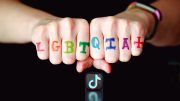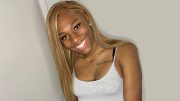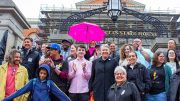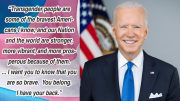By: Al Gentile/TRT Reporter—
At Midway Studios in Fort Point, Boston, several LGBTQ artists are making a statement.
The Boston LGBTQIA Artist Alliance (BLAA), an organization which “seeks to elevate the visibility of and provide resources to LGBTQIA artists,” launched a political art exhibition called “Hydra Effect.” In Greek mythology, the “Hydra Paradox” is a situation where a proposed solution worsens the problem it was aiming to solve.
“[President] Trump’s inauguration and the fears of what was to come were present on the minds of everyone on the BLAA Committee,” said BLAA Director Dylan Hurwitz. “We talked about the ways LGBTQIA artists have had to grapple with the unthinkable historically, and we wanted to provide a venue for LGBTQIA artists to respond to this urgent moment.”
The exhibition, which runs until July 14 with a closing reception on July 7, is filled with the art of 15 local LGBTQIA artists. The art pieces on display are an emotional proclamation of the role of art within the political reality under President Donald Trump, according to Hurwitz.
“Hydra Effect presents examples of the roles that art can play in our current political climate,” Hurwitz said. “The arts provide a crucial opportunity for people to not only reflect on reality, but to imagine alternate and new realities, new ways of organizing, and of being.”
The Rainbow Times spoke with two of the showing artists, Lauren Alindogan and Ena Kantardzic, to expound on the role of art in society.
Alindogan, who identifies as genderfluid and bisexual, said in today’s political climate, art is another way to be heard.
“Art is a component of resistance, a format for ideological discourse,” Alindogan said. “It provides a visibly recognizable aesthetic and a point of connection for a community.”
Yet for Alindogan, it is not wholly a political statement. Her art is also a way to express her emotional reality as a gender-fluid person.
“Most of my work is about my experience as a queer person of color in an often uninformed or hostile world,” Alindogan said. “This nebulous sense of identity affects my daily perception and experience, and from there it informs my art practice.”
The expression of gender identity and sexual orientation can be a difficult undertaking. In circumstances where fear of misunderstanding are present, these artists, in some cases, have many hurdles to cross before being able to simply express who they are.
LGBTQIA artists, Hurwitz said, are facing a world where they are underrepresented. Alternately, externalizing this internal experience can be at once terrifying and liberating.
“The voices of LGBTQIA artists are underrepresented in the world, including within the arts. The act of creating art involves an externalization or visualization of the ideas and experiences of the artist,” Hurwitz said. “This externalization forces viewers to confront and negotiate what was previously a private experience of the artist.”
For Kantardzic, who recently came out as pansexual, art is a way to navigate inwardly in a way that allows others to benefit from her exploration.
“My identity has impacted my art in a way that it has helped me explore my own autonomy, and through this I feel my idea of self has grown,” Kantardzic said. “I also think it gives a lot of context to the type of work I am making, as I am constantly finding things and ideas that I am drawn to.
While definitively an inward experience, Kantardzic said her art also reflects the current external realities through the lens of her creativity.
“I believe that the artist must always reflect the times we inhabit, and that this is done naturally,” Kantardzic said. “Our role as creators and makers is a somewhat biological [phenomenon] in our pack-species. We are indicators of how our culture and society are functioning. The role of art is the representation of this experience.”
“BLAA sees its role as facilitating dialogue around art and in bringing people together,” Hurwitz said. “Around these exhibitions we facilitate community building through dialogue at artist talks and at receptions, as well as through other public programming including performances, film screenings, art workshops, and vigils.”
This sense of community—and the healing and evocative power of art—are needed more than ever, according to Alindogan.
“Many minority communities, including but not limited to the LGBT community, are under attack in the current political climate,” Alindogan said. “In this state of duress, it is of even deeper importance that we utilize art. Art can inform a community about its history, make vital connections within the community, and provide cultural visibility.”
For information on BLAA, visit their website at www.blaa.us.
[This story originally ran in the July 6th, 2017 issue of TRT]

